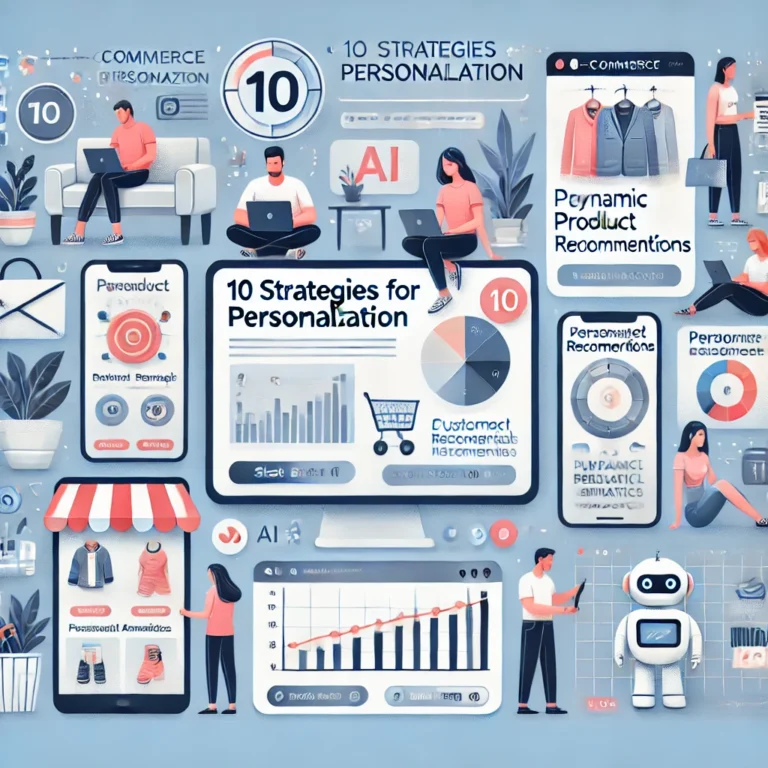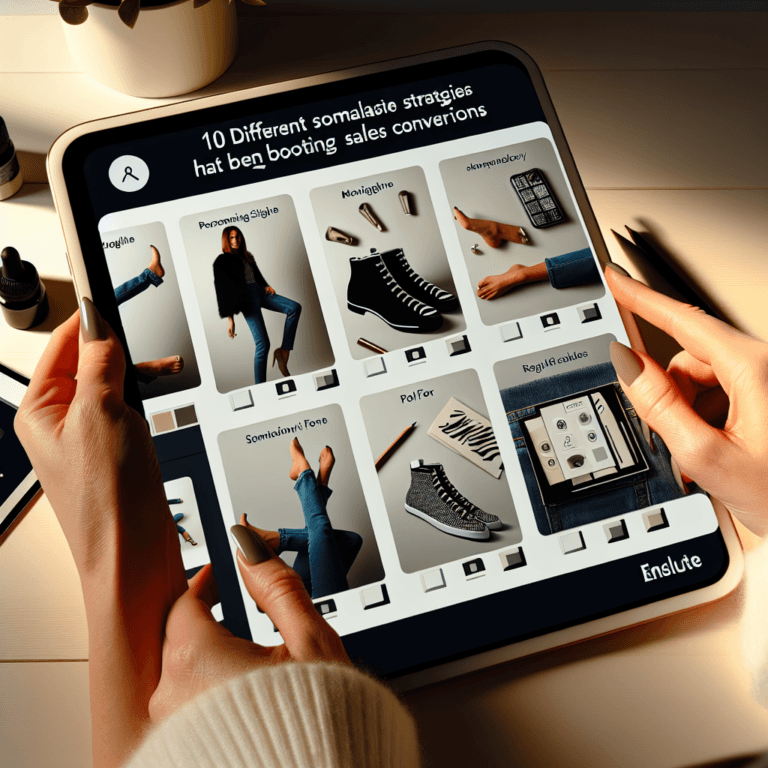Have you ever felt like your inbox is overflowing with irrelevant marketing messages, or that websites bombard you with generic product suggestions? In the age of overcrowded digital experiences, customers crave a more personal touch. Enter data-driven personalisation, the revolutionary marketing strategy that leverages customer data to craft bespoke experiences that resonate with each individual. This approach isn’t just about feeling valued – it translates into real business benefits, boosting customer loyalty, conversions, and ultimately, your bottom line.
As a veteran e-commerce marketer with 25 years in the trenches, I’ve seen countless marketing campaigns fall flat. The truth is, generic messages just don’t resonate with today’s savvy shoppers. That’s where data-driven personalisation comes in. It’s the secret weapon for building stronger customer relationships and boosting your bottom line.
Why Personalisation Matters in E-commerce
Imagine walking into a store where a friendly assistant greets you by name, remembers your favourite brands, and suggests items you’d genuinely love. That’s the power of personalisation in action.
But why exactly should you care about data-driven personalisation? Here are some key benefits that speak directly to your bottom line:
- Soar Higher with Customer Loyalty: Think about it – customers are more likely to stick with a brand that feels like it “gets them.” Personalisation shows you understand their needs and preferences, fostering trust and loyalty. Studies by Medallia show that loyal customers are 5x more likely to repurchase, making personalisation a goldmine for repeat business.
- Conversion Rates that Sing: Imagine showing a customer shoes they’ve been eyeing online in a targeted ad, or recommending a phone case that complements their recently purchased phone. Personalised product suggestions are far more likely to convert into sales. In fact, McKinsey & Company report that personalisation can increase conversion rates by up to 500% – a statistic no e-commerce business can afford to ignore.
- Happy Customers, Happy Business: When customers feel valued and understood, they’re more likely to be happy advocates for your brand. Personalised marketing that caters to their needs fosters customer satisfaction, leading to positive reviews and recommendations. A PwC report highlights that satisfied customers are 17% more likely to recommend your brand to friends and family, propelling your business growth.
Getting Started with Data-Driven Personalisation
Now that you’re convinced personalisation is the way to go, you might be wondering where to begin. Here’s a step-by-step approach to get you started:
- Data is King: The foundation of personalisation is data. This includes customer information like demographics, purchase history, browsing behaviour, and even social media interactions. Most e-commerce platforms offer built-in analytics tools to gather this valuable data.
- Segment Your Audience: Don’t treat all customers the same. Segment your audience based on shared characteristics to deliver targeted messaging. For example, you could segment by demographics (age, location), interests (favourite brands, product categories), or purchase behaviour (frequent buyers, first-time customers).
- Craft Personalised Experiences: Once you know your audience segments, tailor your marketing efforts to resonate with each group. Here are some personalisation tactics you can implement:
- Customised Website Experiences: Greet returning customers by name, showcase products relevant to their past purchases, and offer targeted promotions.
- Product Recommendations: Use browsing behaviour and purchase history to suggest complementary items. Think of Amazon’s “Customers Who Bought This Also Bought” section – it’s a personalisation tactic that works wonders.
- Dynamic Email Campaigns: Segment your email list and send targeted email campaigns with personalised product suggestions, birthday offers, or abandoned cart reminders.
- Leverage the Power of Automation: Thankfully, you don’t have to do everything manually. Marketing automation tools can help you segment your audience, personalise emails, and trigger targeted recommendations based on customer behaviour.
Taking Personalisation to the Next Level
While the above steps provide a solid foundation, personalisation is an ever-evolving field. Here are some ways to take your personalisation efforts to the next level:
- Unleash the Power of AI: Artificial intelligence (AI) can analyse vast amounts of customer data to identify patterns and predict behaviour. This allows you to deliver hyper-personalised recommendations and marketing messages in real-time.
- Embrace Real-Time Personalisation: Imagine a customer browsing your winter wear section. Real-time personalisation might use their location data to suggest a warmer jacket if they’re browsing from a region experiencing a cold snap. This dynamic approach creates a more engaging and responsive shopping experience.
- The Future of Personalisation: The McKinsey Framework McKinsey & Company, a world-renowned management consulting firm, offers a valuable framework for building a successful personalisation strategy. Here are the key pillars:
- Data & Analytics: This forms the foundation, ensuring you have the right data to power personalisation efforts.
- Content & Offers: Craft compelling content and offers that resonate with your target audience segments.
- Customer Journey: Personalisation should be seamlessly integrated throughout the customer journey, from initial browsing to post-purchase interactions.
- Organisation: Ensure your company culture fosters collaboration between marketing, sales, and customer service teams to deliver a unified personalised experience.
Personalisation and Privacy: Striking a Balance
As we use data for personalisation, it’s crucial to remember customer privacy concerns. Here are some tips to ensure you’re striking the right balance:
- Transparency is Key: Be upfront about the data you collect and how you use it for personalisation. Provide clear opt-in and opt-out options for customers who wish to control their data.
- Compliance with Regulations: Ensure you comply with all relevant data privacy regulations, such as the General Data Protection Regulation (GDPR) in Europe. This includes obtaining explicit consent from customers before using their data for personalisation.
- Security is Paramount: Implement robust security measures to safeguard customer data. Regular data backups and encryption protocols are essential to prevent data breaches.
Data-Driven Personalisation FAQs
What Does Data-Driven Personalisation Mean in Marketing?
How Can Businesses Start Implementing Data-Driven Marketing Strategies?
Gather Customer Data: Utilise your e-commerce platform’s analytics tools and encourage customer sign-ups to collect valuable data.
Segment Your Audience: Divide your customer base into groups with shared characteristics for targeted marketing efforts.
Personalise Your Marketing: Craft website experiences, product recommendations, and email campaigns that resonate with each audience segment.
By following these steps and continuously refining your personalisation strategy, you can transform your e-commerce business and forge stronger relationships with your customers.
Conclusion
In today’s competitive e-commerce landscape, personalisation is no longer a luxury – it’s a necessity. By leveraging data to understand your customers and deliver personalised experiences, you can build brand loyalty, boost conversions, and propel your business towards long-term success. So, take the plunge into the world of data-driven personalisation and watch your customer relationships blossom.
I hope this blog post empowers you to implement winning personalisation strategies in your e-commerce business. If you have any questions, feel free to leave a comment below. Happy personalising!





